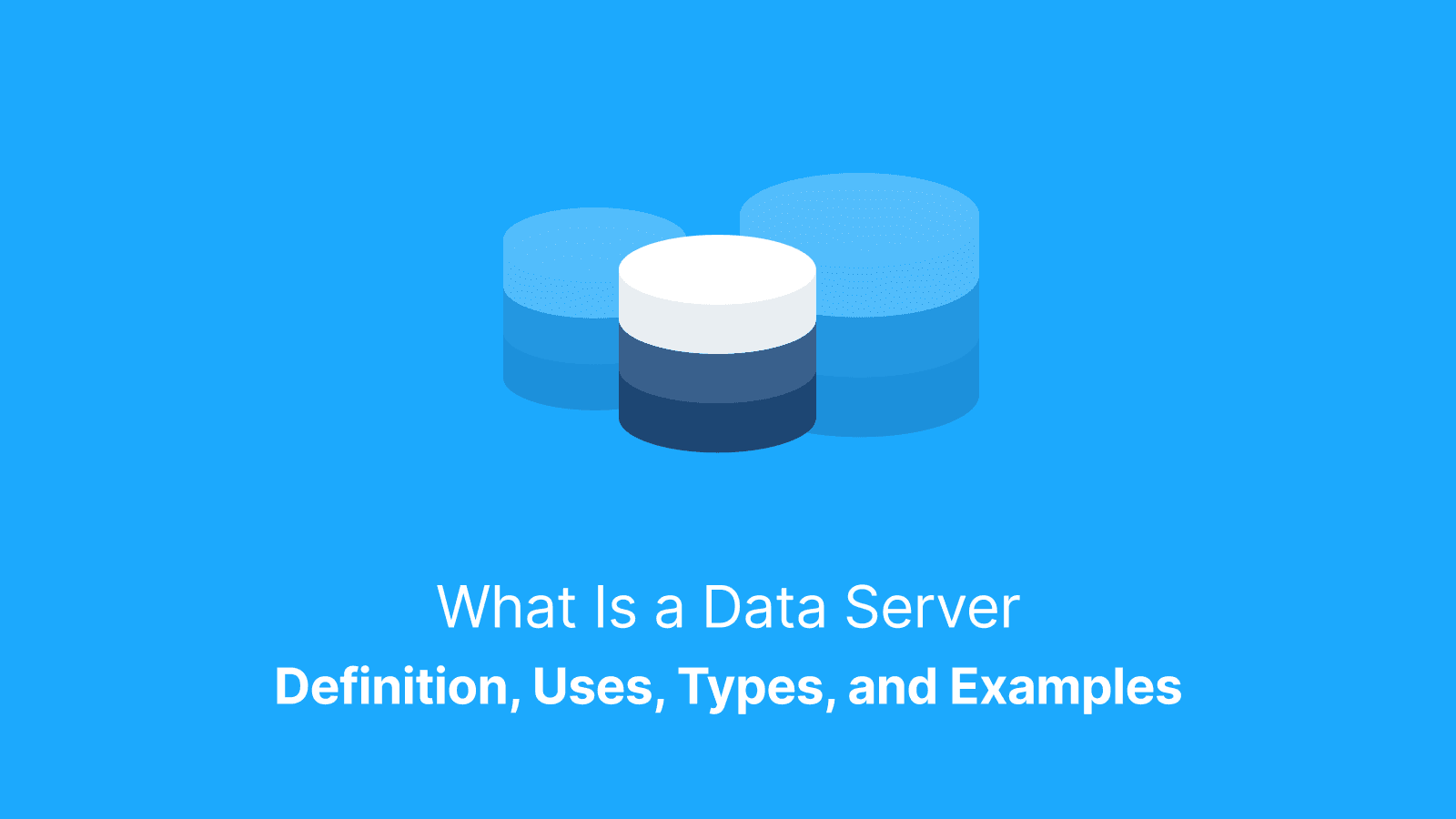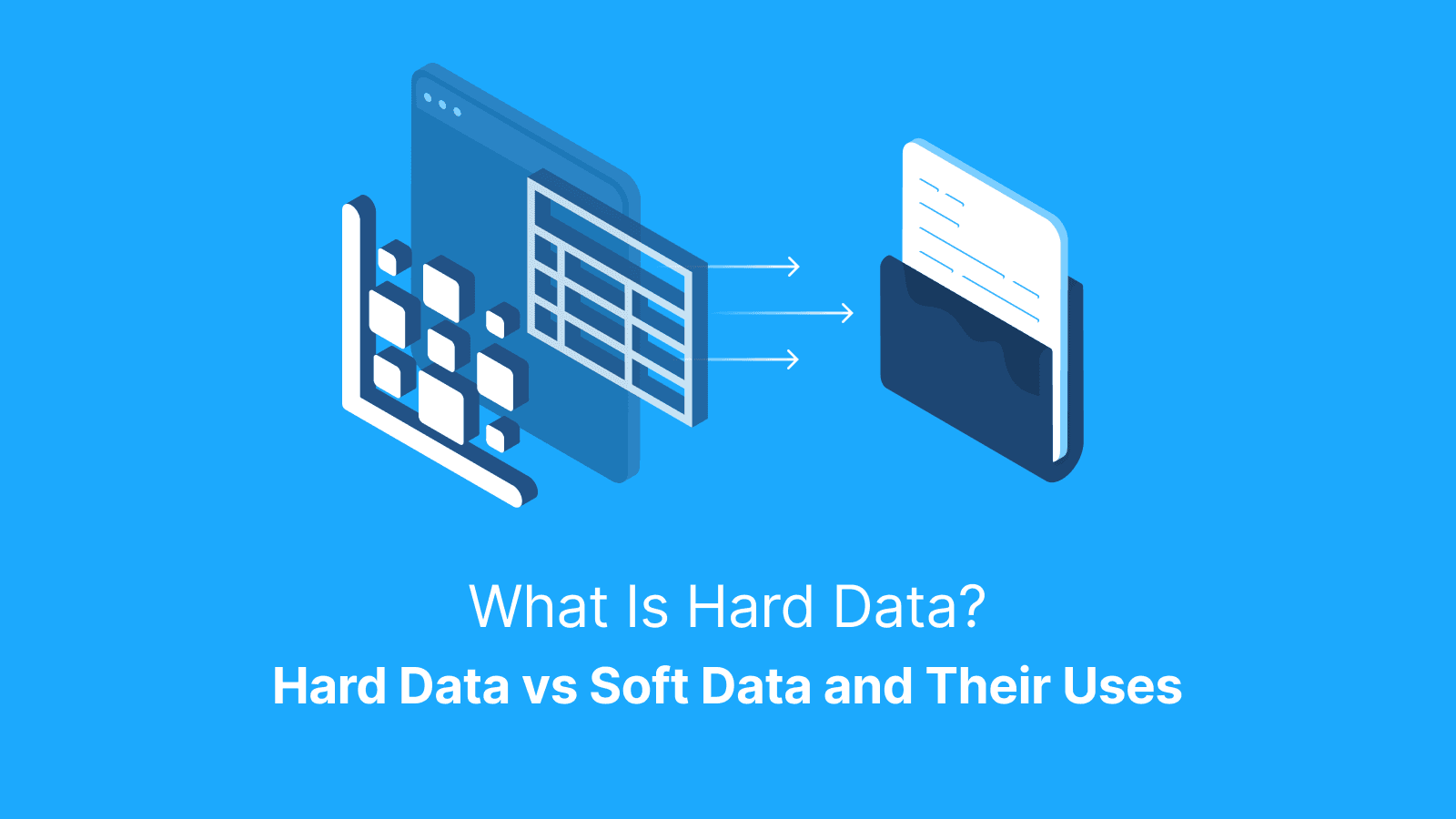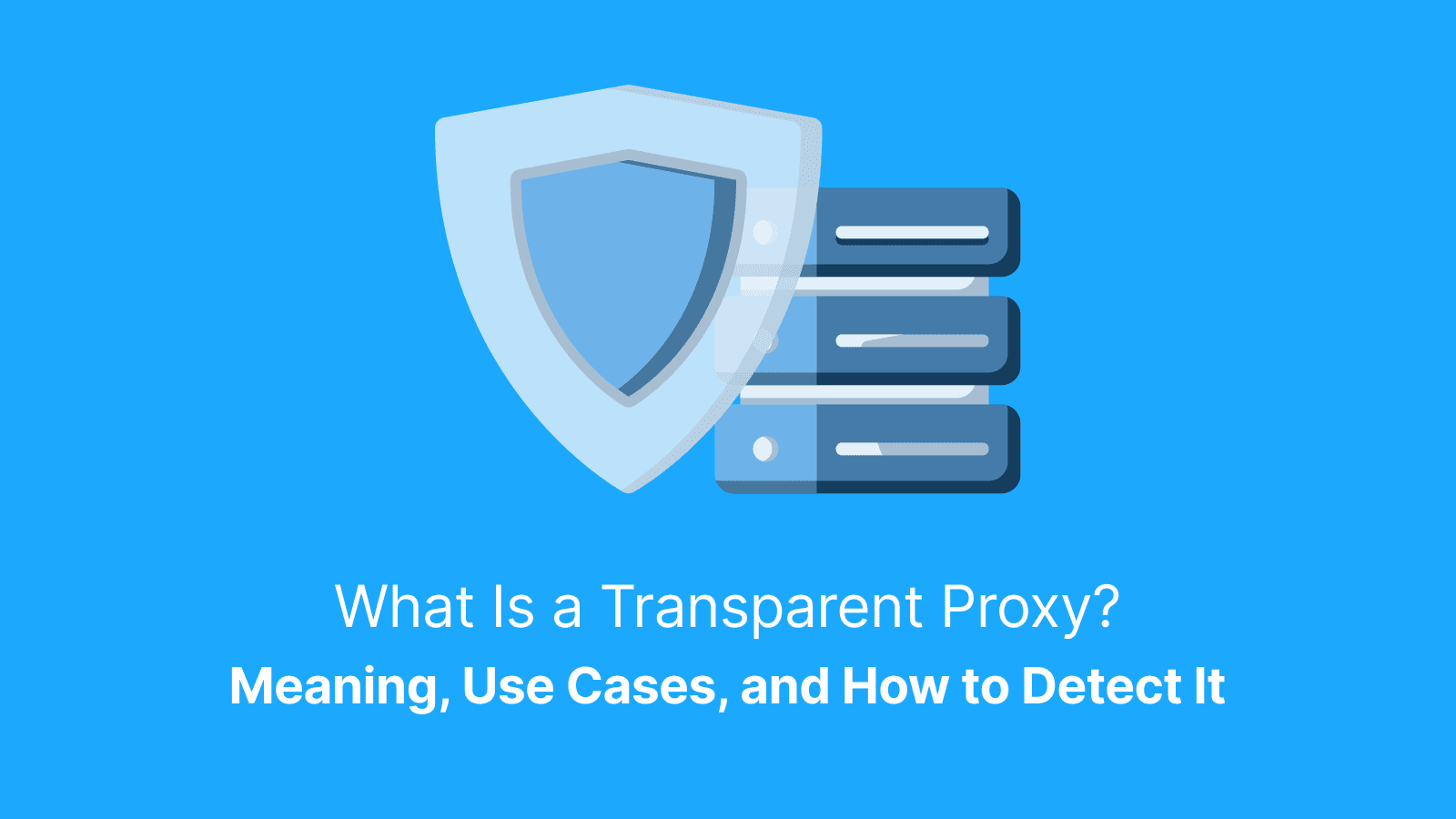A data server is a specialized server designed to store, manage, and provide access to large volumes of data to other computers over a network. Data servers contribute to the efficient running of websites. In this guide, we uncovered how data servers function, the different types, uses, risks, and how proxies help improve performance and security.
What Is a Data Server?
A data server is a computer that is designed to store, manage, and serve data to other computers or client applications on request. Data servers act as a central repository for large volumes of data, making it possible for other systems to access both unstructured and structured data. A data server often operates in the background to ensure the consistent and reliable delivery of resources in response to data queries.
What Components Make Up a Data Server?
A data server is made up of hardware and software components. The hardware components include multi-core CPUs for parallel processing, ECC RAM to safely cache data, RAID and replication for durability, and NVMe storage for high throughput and low latency. The High-bandwidth NICs make fast handling of data transfer possible. Most servers include an out-of-band BMC (e.g., Dell iDRAC, HPE iLO), implementing IPMI/OOB management for remote control.
For software components, they run on Linux or Windows Server, and host database engines such as SQL Server, MySQL, or MongoDB. Many also use virtualization platforms like VMware to run multiple data environments efficiently.
How Does a Data Server Differ from a Database Server?
A database server is a specialized type of data server that may run a relational DB (e.g., MySQL/PostgreSQL) or a non-relational DB (e.g., MongoDB). In contrast, a data server is broader and refers to any computer that provides data services to other systems or users.
How Does a Data Server Work?
When a client application sends a request over the network, it first undergoes authentication and verification to make sure the access is secure. Once it has been authenticated, the server processes the request. In database servers specifically, a query optimizer evaluates the request and selects the most efficient execution plan. This helps to ensure optimum use of resources and also shortens the response time.
The server then goes on to retrieve data from in-memory caches if the answer has been cached. If the answer is not cached, the data is retrieved from disk-based storage. The server uses connection pools to smoothly handle multiple users without overloading the system. Commit logs are then used to ensure that changes are safely recorded before they are finalized. This helps to guarantee the durability of data in case of system failure.
Further reading: What Is Data Retrieval, How It Works, and What Happens During It? and What Is Financial Data? Definition, Types, Examples & Uses.
How Are SQL Queries Processed and Typed?
In database engines like Microsoft SQL Server, an SQL query first goes through the parser. The function of the parser here is to check syntax and change the query into an internal representation. Afterwards, the optimizer evaluates database statistics.
SQL Server supports multiple data types, including integers, VARCHAR, and DATETIME2. This determines not only how data is stored but indexed and queried. For example, teams that manage code-first databases use SQL Server Data Tools (SSDT) to carry out schema versioning and deployment through CI/CD pipelines. This simplifies the test process and makes it possible to ship updates as part of modern DevOps workflows.
How Is Concurrency Handled?
Data servers handle multiple operations simultaneously and are able to enforce concurrency through ACID-compliant transactions. SQL Server defaults to “Read Committed”, which allows systems to determine how much data is visible to users during overlapping transactions. Enable SNAPSHOT/RCSI for row versioning (MVCC style) behavior.
What Types of Data Servers Exist?
There are different types of data servers, including relational servers, document-oriented NoSQL servers, file and object servers, in-memory caches, and edge data servers.
Relational (RDBMS)
Relational database servers (RDBMS) are built around structured tables and fixed schemas, and help to enforce relationships between data using foreign keys and indexes. Examples of this type of server are Microsoft SQL Server and PostgreSQL. They offer strong ACID guarantees and are ideal in finance, e-commerce, and Enterprise Resource Planning (ERP) businesses.
NoSQL / Document
NoSQL document databases store data in a flexible JSON-like format and not in fixed tables. This allows developers to model data in ways that reflect real-world objects. This makes them ideal for SaaS platforms and other dynamic back-ends that experience frequent updates in data formats. Examples of NoSQL documents include MongoDB and Couchbase.
File & Object Storage
File servers, especially those that utilize protocols like SMB (Windows) or NFS (Linux/Unix) provide structured, shared access to internal files. Their familiar folder hierarchy allows for easy use across networked devices.
Meanwhile, object storage platforms like Amazon S3 or MinIO organize data as discrete objects with metadata. This allows them to scale to petabytes or more. File and object servers are perfect for a daily supply of data for office teams while meeting the large storage demands that are associated with modern data workflows.
In-memory / Cache
In-memory caches (e.g., Redis), can deliver sub-ms operations under ideal conditions. However, expect low single-digit ms over the network. Whenever speed is critical, like in session stores, in-memory cache is ideal. These systems prioritise performance over durability and can act as caching layers where slower and persistent storage is needed.
Edge / Micro-Data Centres
Edge data servers are compact systems that are deployed to users in retail stores, 5G base stations, as well as factories. They are usually housed in micro-data centres and are designed to process data onsite with minimal effort. These servers handle workloads locally and periodically sync with the cloud backup. This helps to reduce dependence on distant cloud regions and ensure resilience even during network disruptions.
Why Do Modern Businesses Depend on Data Servers?
Many modern businesses rely on data servers to function optimally. In e-commerce, for instance, well-optimized data servers can help provide a seamless customer experience and increase growth and sales.
Factories stream millions of sensor readings per hour into high-performance time-series databases in industrial IoT. These databases run on specialized data servers. These platforms track temperature and power usage and utilize them to give predictions about machine failures even before they occur, which can save organizations millions in productivity.
How Do E-Commerce Sites Process Orders?
When a user visits an e-commerce site and clicks “Add to Cart,” a chain of events begins instantaneously. The server records the selected item, user ID, and cart details in a session-aware SQL database. If the user gets to checkout, the system checks for product availability, calculates shipping and tax, and reserves inventory.
Payment is typically authorized while capture may occur immediately or later (e.g., on shipment). The data server then logs the transaction and updates the needed financial records. Once the purchase is successful, a confirmation email is sent to the user, and a receipt is issued. All these processes happen in a matter of seconds. During peak traffic events, it becomes critical for these data servers to function at scale in order to avoid failed transactions and loss of revenue.
How Is Real-Time Analytics Powered?
Real-time analytics is powered by continuous data ingestion into specialized engines that are designed for high-speed inserts and compact storage. As events stream in, they are written to disk in milliseconds, indexed by timestamp, and made available immediately for analysis. Engineers and analysts query this data through real-time dashboards, tracking metrics like CPU load, error rates, or machine temperature as they unfold. The immediate visibility ensures that proactive decisions are made way before outages or damage occur.
How Do SaaS Platforms Handle Multitenancy?
Multitenancy is an important aspect of cloud computing where a single infrastructure serves many users while keeping their data separate. This is made possible through logical or physical sharding, depending on scale or sensitivity. A central metadata layer maps each user’s requests to the correct data shard. This helps to ensure seamless routing and strong isolation. Access controls and tenant IDs are also enforced at every layer to prevent data leaks.
How Do Proxies Enhance Data-Server Operations?
There are multiple instances where proxies strengthen data server operations. Take, for instance, a global retailer who runs an analytics platform that tracks the prices of competitors and uses the data to feed dynamic pricing algorithms. The team may face IP blocks, rate limits, or geo-restrictions when scraping data from the competitor's website. This is where proxies come in.
Rotating residential proxies like the ones Live Proxies offers may help them bypass these blocks to get the data they need. Users are allocated private IPs that are ethically sourced to enhance anonymity, minimize disruptions, and increase success rates. When used responsibly, proxies can help scale data acquisition.
Should You Host Data Servers On-Prem or in the Cloud?
There are multiple factors to consider before hosting data servers on-prem or in the cloud. These factors include control, cost, and flexibility. You should go for on-prem if your aim is to directly control security, enjoy predictable capital expenditure, and low-latency access for internal systems. However, it requires a considerable upfront investment and in-house expertise to manage it.
In contrast, cloud platforms like Azure SQL provide elastic scaling and automated backups. They combine high availability with minimal maintenance and are ideal for fast-growing or distributed applications. Many businesses combine both on-prem and cloud hosting to optimize performance and save costs.
What Steps Should You Take to Set Up a Small Data Server?
To set up a small data server, first size the hardware. Choose a CPU with enough cores to accommodate query volume. The selected RAM should be based on the size of the data set, as well as future growth projections. Next, install and patch a server OS such as Linux to ensure a secure foundation. Then strengthen the system with firewalls, TLS encryption, and least-privilege user accounts. This will help to limit attack surfaces.
Once the system has been secured, deploy your database engine and load initial schemas and indexes. This would help support your application logic. Lastly, set up off-site backups to make recovery possible in case of disaster. Also, use tools like Grafana with DB exporters (e.g., PostgreSQL/SQL Server exporters) to visualize performance and query patterns.
Which Metrics Prove a Data Server Is Healthy?
Some metrics show that a data server is performing at its optimum, and they include:
- A CPU saturation level that is below 80% for latency-sensitive applications
- Stability in the Input/ Output Operations Per Second (IOPS)
- A high buffer-cache hit ratio (above 95%)
- Latency SLOs set from user-centric goals (e.g., P95 < X ms) rather than a one-size-fits-all 50 ms.
- Near-zero occurrences of deadlock frequencies.
What Risks Threaten Data Servers and How Can You Mitigate Them?
Data servers face multiple risks, including unplanned downtime caused by hardware failures, performance bottlenecks due to poor indexing or inefficient queries, misconfiguration, weak access control, and ransomware.
How Do You Prevent Downtime & Data Loss?
To prevent downtime and possible loss of data, ensure you keep three copies of your data on two different media, with one copy stored off-site. This helps to ensure resilience against hardware failure, corruption, or ransomware. Failover clusters also make it possible for services to switch automatically to standby servers if there is a failure of the primary node. Teams should perform regular disaster recovery drills and restore tests to validate RTO/RPO.
How Do You Avoid Performance Bottlenecks?
In order to avoid performance bottlenecks, you will need to establish normal metrics for query latency and CPU usage. This makes it easier to spot deviations. You should also carry out regular index audits to help identify unused or missing audits and enable query plan caching.
How Do You Secure Sensitive Data?
For the security of sensitive data, it is important to implement multilayer encryption both at rest and in transit to ensure data is protected from interception or theft. There should also be privileged access management (PAM) that restricts high-level permissions to only essential personnel. A comprehensive audit log is also vital to track all access and changes.
Also, use rotating residential proxies from a reputable provider like Live Proxies to minimize exposure when scraping. With these proxies, users can enjoy automatic IP refreshes, which helps scrapers stay undetected. The proxies are ethically sourced and users have the option to choose either rotating or sticky sessions.
Where Are Data Servers Headed Between 2025 and 2030?
Between 2025 and 2030, data servers will experience a lot of changes. ARM-based CPUs are likely going to gain traction in data centers because of their superior performance-per-watt. AI co-processors will also be embedded alongside traditional CPUs to help increase query planning, anomaly detection, and real-time optimization.
Gartner has long projected that by 2025, 75% of enterprise data will be created and processed outside traditional data centers or clouds. This signifies a shift toward edge and sovereign computing.
Further reading: What is Web Scraping and How to Use It in 2025? and What is an Anonymous Proxy: Definition, How It Works, Types & Benefits.
Conclusion
Companies depend on data servers to meet diverse business needs. It is therefore important to implement health monitoring for CPU loads, query latency, and cache hits, while making room for emerging trends like sovereign cloud mandates and AI co-processors.
FAQs About Data Servers
How much RAM does a starter data server need?
For small workloads under 1 TB, a starter data server should have 32–64 GB of RAM. As data volumes grow, increase the RAM so that memory consistently exceeds the size of frequently accessed data.
Can containers run stateful data servers safely?
Yes, when configured properly with Kubernetes StatefulSets and PersistentVolumes (plus backups, anti-affinity,etc), containers can run stateful data servers safely. Tools like Docker commonly host databases like PostgreSQL, while Kubernetes StatefulSets can help to maintain stable network IDs and persistent identities for stateful apps.
What’s the difference between a data server and a server rack?
A data server is a computer server that runs workloads like databases, while a server rack is the physical infrastructure that holds and organizes multiple servers.
Do rotating proxies slow large data ingests?
You may experience latency when using rotating proxies for large data ingest. However, it is a necessary tradeoff to avoid IP bans during data ingest or high-volume scraping.
Is an SSD mandatory for modern workloads?
Although it is not mandatory, SSDs are highly recommended for modern workloads because they are fast and reliable. SSDs will help boost overall performance.
How do SQL Server Data Tools streamline DevOps?
SQL Server Data Tools (SSDT) enable schema-as-code. This makes it possible for teams to version database structures alongside application code. These practices can shorten release times and make database changes much faster, safer, and fully integrated into DevOps workflows.
Which regulations govern financial data servers?
Some regulations that financial data servers are expected to comply with include GLBA/FTC safeguards, FFIEC guidance, and SEC Reg S-P (for broker-dealers/advisers/funds). FedRAMP applies when serving U.S. federal agencies.




